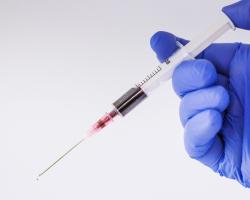People should maintain good vision at any age. However, some physiological processes going on in our bodies might potentially affect our sight. For example, children are naturally longsighted and adults after 45 years of age tend to experience difficulties with seeing close objects.
Specialists emphasise that all cases of eyesight deterioration must be diagnosed and treated, and if a visual defect is to blame, it should be corrected.
“Still, it can be difficult for people who have never had good eyesight to realise that something is wrong. The diagnosis and identification of the severity of the defect is possible only after an examination," Dr. Alicja Barwicka, an ophthalmologist from the Damian Medical Centre, told e-zdrowie.
How does sight change with age?
Small children have a completely different accommodative capacity, or the ability of the eye to adapt to seeing items located at different distances from it. Babies only start developing certain functions, such as stereoscopic vision. They also have a certain farsightedness, which is normal at this age.
“However, even a physiological defect that usually disappears as the child develops should be corrected – even if it reduces the sharpness of vision only slightly," said Dr. Barwicka.
Problems with seeing close objects in healthy people at about 45 years of age, although this is a physiological process connected with the gradual loss of the accommodation range, should be corrected with appropriate corrective lenses.
“It is difficult to objectively assess the sharpness of vision in very small children, but it is easy to notice that they are not interested in small toys and choose the larger ones," points out Dr. Barwicka. "Another common sign is a baby rubbing its eyes. The incorrect configuration of eyeballs, holding books very close to the head, and frequent squinting are also distinctive.
When should you visit an ophthalmologist?
Dr. Barwicka stresses that any deterioration in our vision should alarm us, but without conducting tests it is impossible to determine if an impaired sharpness of vision during reading is related only to presbyopia (old-sightedness). Similar symptoms can occur in other disorders.
Some disturbing symptoms include redness, eye pain, running eyes, the feeling of a foreign body in the eye or sand under the eyelids, and secretion in the conjunctival sac.
If somebody in your family suffers or has suffered from such diseases as e.g. glaucoma, AMD (age-related macular degeneration) or corneal degeneration, you are in a risk group.
“Periodic ophthalmological tests are also vital if we suffer from diabetes or circulatory system conditions, including arterial hypertension," Dr. Barwicka reminded. She also cautioned that many diseases such as glaucoma might present no noticeable symptoms for a long time.
Is our eyesight influenced by our diets?
Recent studies have shown that the diet – especially when rich in vegetables, fruit and sea fish – is a very important factor in maintaining correct vision.
To protect the structure of the macula, the diet should be rich in two organic pigments from the group of carotenoids – lutein and zeaxanthin. Both pigments, largely present in green vegetables, are the essential element in the defensive system of the organ of sight – they protect it from excessive exposure to the harmful range of the spectrum and against free radicals.
Resveratrol, which can be found in some varieties of red grapes, also plays a significant role in this.
Finally, sea fish, which contain omega-3, omega-6 and omega-9 polyunsaturated fatty acids, have a long-standing and important status when it comes to the nutritional prevention of some eye diseases.









Comments (0)